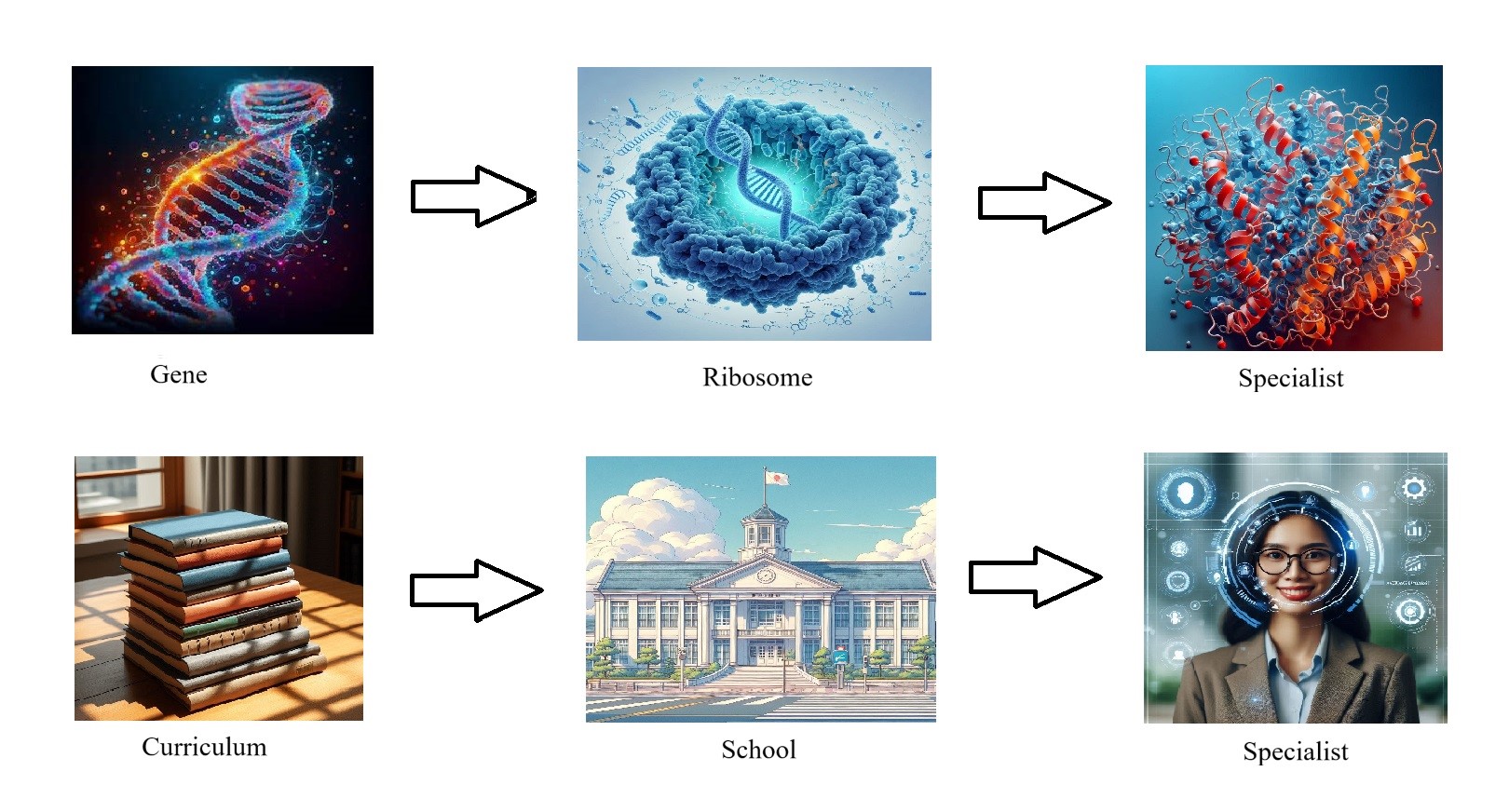Emeritus Professor Magnus S Magnusson explores the unique sudden bio-mathematical self-similarity between human and protein societies and the human explosion: from T-patterns to T-strings and T-societies
Since the 1970s, this research project comparing human and animal behavior has added neuronal and nanoscale interactions and a set (T-system or T-language) of algorithms and pattern types, resulting in the T-society (Magnusson, 2023). The work of ethologists, such as N. Tinbergen, K. von Frisch, and K. Lorenz, greatly inspired this project; their research on animal and human behavior earned them the Nobel Prize in Physiology or Medicine in 1973. Following this, E.O. Wilson published his influential book, Sociobiology, in 1975, which focused on the behavior of social insects.
Much inspiration also came form: real-time probabilistic analysis (Skinner, 1969), the relationship between syntactic structure and creativity (Chomsky, 1957), studies on turn-taking in adults (Duncan & Fiske, 1977), and ethological research examining interactions and social structures in both children and social insects (H. Montagner, 1971, 2012).
Methodological and theoretical development
In the late 1970s, data was collected on the real-time occurrence of behavior categories, i.e., point series within observation intervals. However, multivariate statistical methods and artificial neuronal network analysis techniques were insufficient for managing this real-time data. This led to the development of new pattern types, most notably the T-pattern, along with corresponding detection algorithms and specialized software (Theme). (See Magnusson, 1983, 1996, 2000, 2005, 2006, 2017, 2020a, 2020b, 2023).
The T-Pattern
Initially defined by an algorithm (Magnusson, 1981, 1983), a T-pattern is a self-similar statistical (natural, approximate, pseudo) fractal binary tree. It exhibits a consistent statistical relationship, known as a critical interval, between its branches at each non- terminal node. Additionally, T-patterns recur with statistically significant translation symmetry (see Magnusson, 1996, 2000, 2016, 2020a, 2020b, 2023).

Temporal T-patterns in real-time interactions
Real-time T-pattern detection and analysis (TPA) with Theme software led to the discovery of far more complex patterns than expected in human and animal interactions, including hormonal (Hirschenhauser et al., 2002, 2005), and eventually also in neuronal brain networks (Nicol et al. 2005, 2015) discovering a multitude of unexpectedly complex and highly significant T-patterns (Anolli et al., 2005; Casarrubea et al. 2015, 2018; Magnusson et al., 2016).
T-strings, T-societies, and unique self-similarity
Attention then turned to physical strings of letters or molecules with T-patterns, called T-strings, detected in texts and proteins, and thus in RNA and DNA (Magnusson, 2004, 2020a, 2020b, 2023; Magnusson et al., 2023).
In protein societies, the behavioral potentials and tendencies of the individual proteins are initially set in ribosomes with segments of DNA T-strings, that is, genes external to the proteins. This kind of society of multiple kinds of specialized individuals, defined by a Giant Extra-Individual Purely Informational T-string, or GEIPIT, is here called a T-society, distinguishing it from Interactive Emergence Societies, or IES, which do not involve specialization through GEIPITs and were universal in the RNA world, animals, and even most literate humans until recently.
Only in humans has this changed with mass education and specialization in schools, with segments of a society’s texts (textome), that is, curricula mainly during the last two centuries of unprecedented advances in a biological split second.
The development of extra-individual, infinitely extendable memory—namely, written texts—began around 3000 B.C.
However, by 1500 A.D., 90% of the population was illiterate. In England, literacy rates improved significantly by 1800 A.D., reaching 68%. Despite this progress, in 1841, only 5% of jobs undertaken by men and less than 2% of jobs undertaken by women required literacy (Galor, 2023, p. 67). The introduction of public education around 1800 A.D. resulted in new curricula that brought new specialists, which marked the emergence of human T-societies.
This development coincided with a pivotal turning point in human history (see, for example, Galor, 2022, p. 4, and West, 2017, p. 211).
In the cells of the (pre-DNA) RNA world, RNA assured both information storage and work. Later, in the DNA world, segments called genes in the purely informational genome provide the information to form specialized proteins to do the work.
Outside biological cells, such separation of information and work only occurs in modern human societies, where segments of the purely informational textome, called curricula, provide the information to form specialized humans to do the work (see Fig. 2).
Mathematical regularities in human social behavior (West, 2017), including religious behavior (see Dunbar, 2022; Magnusson, 2009), have appeared and are already stored in GEIPITs. Still unequal for humans, AI’s use of GEIPITs is growing exponentially, but written formulas and prescripts replaced thinking long before computers (Ian Stewart, 2012). Could the similarity of patterns in texts and brains help explain their easy adoption of T-viruses such as fake, superstitious, or holy texts?
T-society self-similarity is only found in modern humans and merits much attention as a turning point in human and Earth’s natural history.

![Picture 1[68] Fig. 1. Interactive Emergence Society vs. T-society](https://www.openaccessgovernment.org/wp-content/uploads/2024/11/Picture-168.png)
